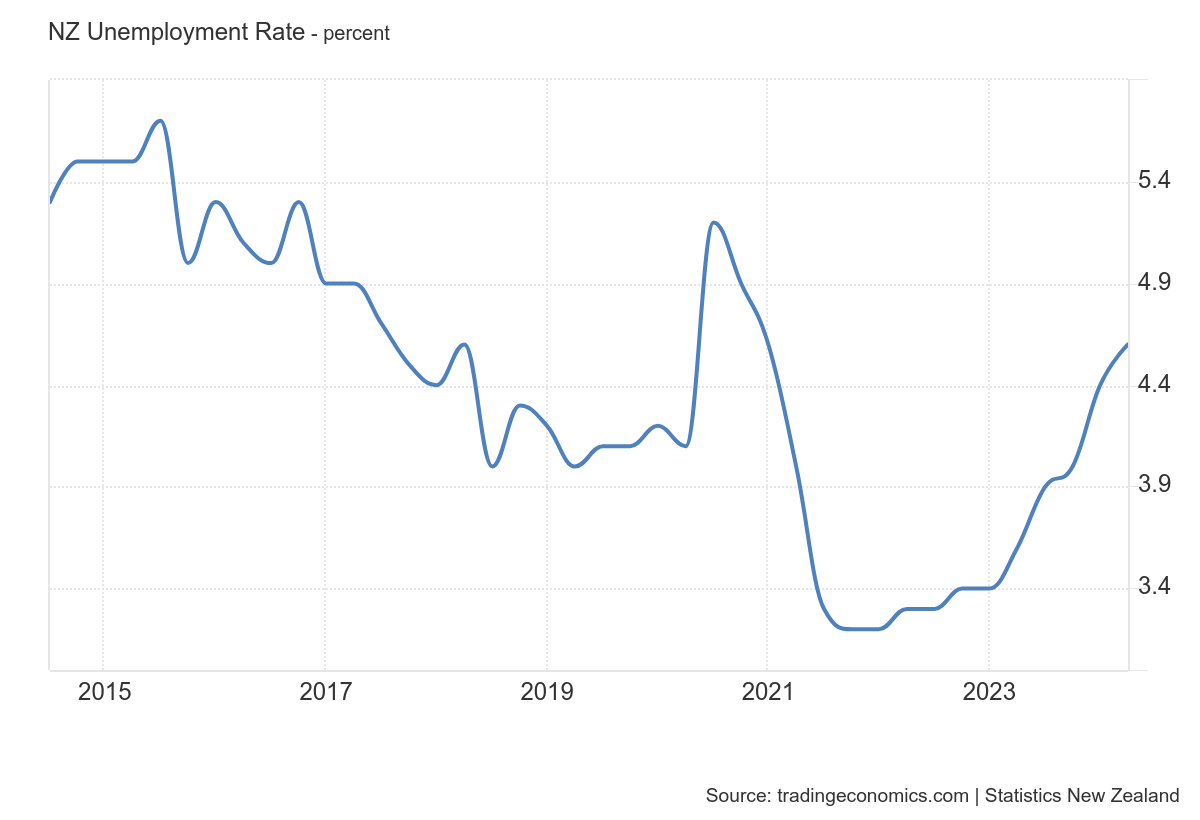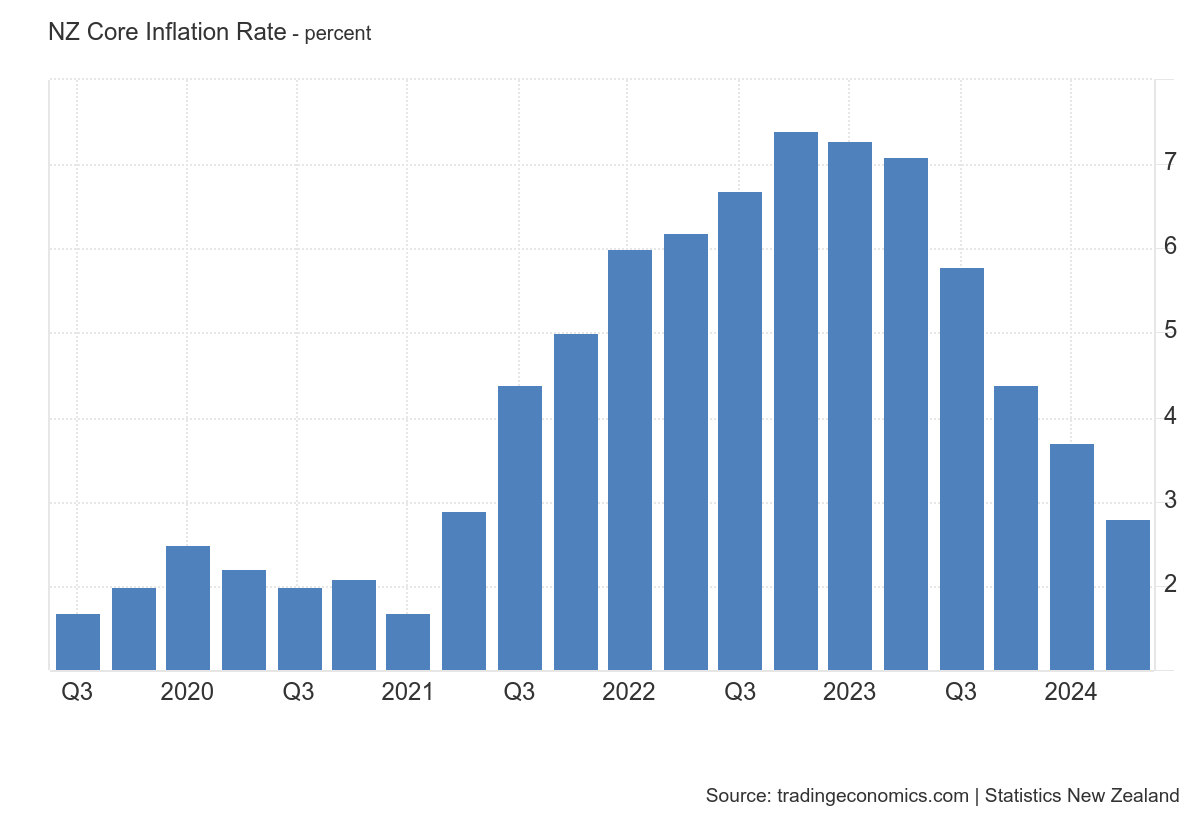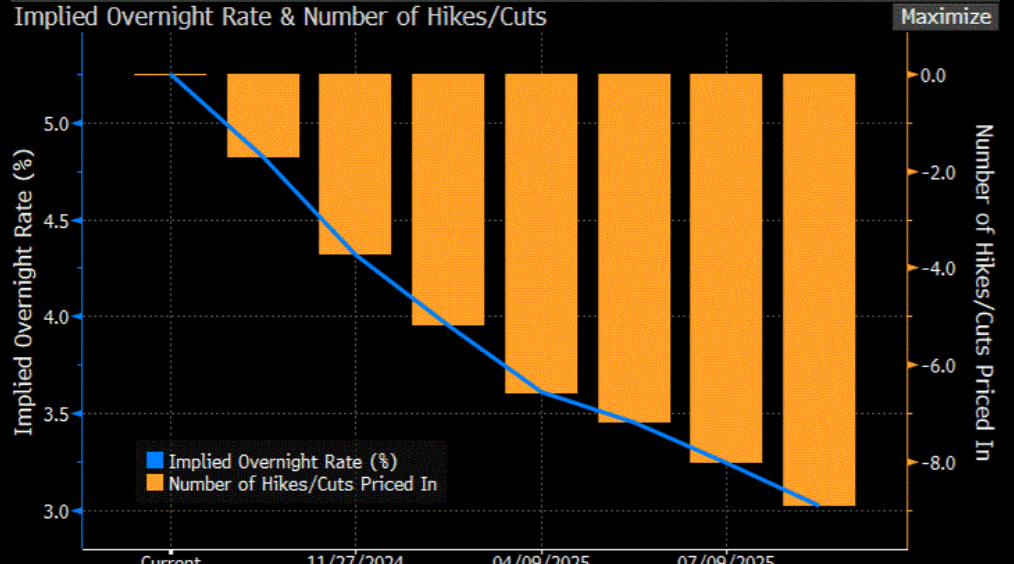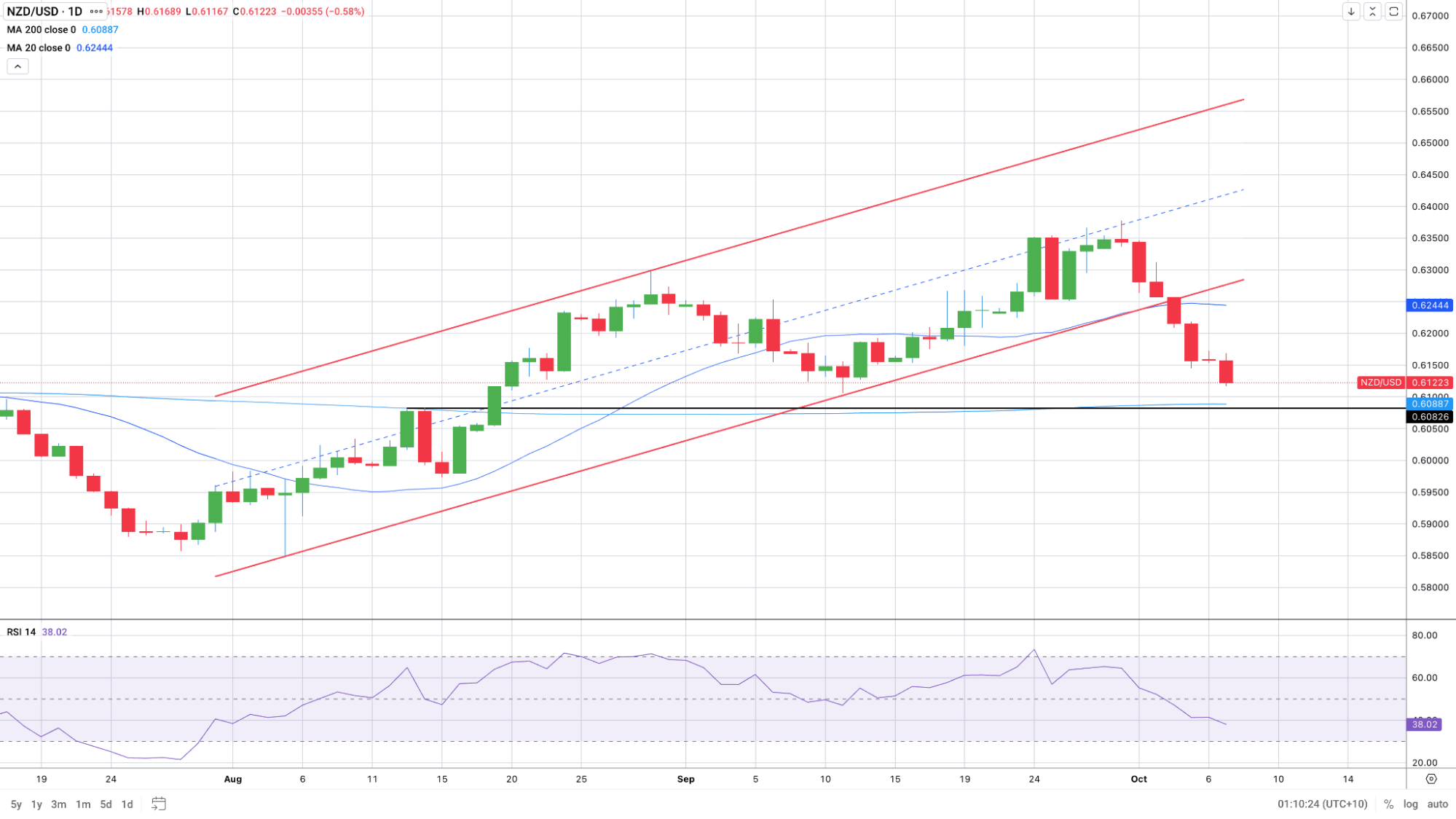RBNZ expected to deliver “jumbo” rate cut
The Reserve Bank of New Zealand is set to cut interest rates during its upcoming meeting, with expectations of either a 25 or 50 basis point reduction. This move follows a 25 basis point cut in August as the RBNZ responded to the country’s recessionary conditions and inflation concerns.
RBNZ poised to cut rates in response to weaker demand
The Reserve Bank of New Zealand is poised to cut interest rates when it meets on Wednesday, with market participants and economists split on whether the central bank cuts by 25 or 50 basis points. The meeting comes following a 25 basis point cut in August in response to recessionary economic conditions and inflation returning to the top end of the RBNZ’s target band. The RBNZ surprised at that meeting by suggesting inflation would return to the target range due to easing in the labour market from slower domestic demand.
Although it is no longer included in the RBNZ’s mandate, New Zealand’s labour market has suffered significant damage as the country’s economy dipped-in-and out of negative growth during the central bank’s tightening campaign. The latest employment figures showed a another jump in the country’s unemployment rate to 4.6% in the second quarter as GDP contracted by 0.2%.

Source: Trading Economics
Diminishing demand-pull price pressures have driven New Zealand core inflation back within the RBNZ’s 1 to 3% target band to 2.8%. Headline inflation remains above it at 3.3%. However, it is trending lower and sits at a three year low, with annualised price growth running at approximately 1.6%.

Source: Trading Economics
Futures pricing is skewed towards a 50 basis point cut from the RBNZ at this meeting, with the consensus estimate amongst economists the same. Given the deterioration in economic growth and further downside risks to an inflation rate already within the target range, the central bank is shifting its focus from restricting economic activity to supporting it. As of the start of the week, swaps markets have baked in 42 basis points of cuts from the RBNZ, equating to an approximately 70% implied probability of a 50 basis point cut.

Source: Bloomberg
NZD/USD weakens following signs of resilient US growth
The NZDUSDs two month uptrend has broken down In anticipation of a potential 50 basis point cut from the RBNZ and following data signalling resilient US economic growth. The pair has broken trendline support from its upward trend channel, with momentum moving to the downside.
Given that a 50 point move isn’t fully baked into the rates market, the NZDUSD is exposed to two-way risk from this RBNZ decision. A 50 point cut will put downward pressure on the pair as rates markets price in the additional eight points of cuts currently not discounted in the market. Short-term volatility will be greater if the central bank opts for a smaller 25 basis point cut, with the markets in that situation to be forced to unwind 17 basis points of earnings from the curve. Given the recent data and the cut at the previous meeting, there's a trivial risk the RBNZ keeps policy unchanged.
From a technical standpoint, a confluence of resistance levels sit around 0.6080 for the NZD/USD, a break of which may invite further selling from traders.

Past performance is not a reliable indicator of future results